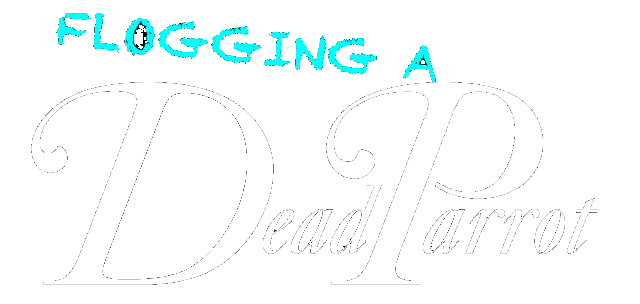I think it makes for interesting reading, and would be very interested if anyone wants to post their own responses. Over to you, Paul...
When it comes to interpreting these clips, it’s worth bearing in mind that there are multiple interpretations – and it’s difficult to privilege any single interpretation as being the ‘right’ one. The writers obviously wanted to be funny, and clearly audiences did (and do) find the sketches funny, but they may be seen as funny for different reasons, or not funny at all. The sketches were written decades ago, when views of homosexuality were different to how they are now – what counted as humorous in those days is likely to have changed for some people.
So from an early 21st century ‘gay rights’ perspective, many of the sketches look old-fashioned, and key in to stereotypes about gay men as effeminate/camp. There stereotypes were popular at the time (also found in the Julian and Sandy sketches on Round the Horne, or Mr Humphries in Are You Being Served), and they are still around today (although tend to be less based on ‘characters’ but more embodied by real comedians like Alan Carr and Paul O’Grady. Society (both then and now) finds camp men funny – although now I think it’s more to do with camp men having a witty and outré sense of humour. Back then, I think camp men were seen as funny more because of their camp mannerisms, rather than their humour.
Some of these stereotypes rely on the idea that a man with a camp-sounding voice or feminine mannerisms is funny. In a notable number of cases, camp mannerisms, feminine tastes, gossipy conversations, cross-dressing etc. are attributed to men who are normally seen as butch (e.g. boxers, knights, mountaineers, judges, soldiers or lumberjacks), and the humour is further derived from the discrepancy between the outer appearance and the unexpected behaviour. This could be interpreted as shocking and even subversive . However, the sketches still equate homosexuality with camp behaviour – so there are less subversive elements to them, depending on your point of view.
Camp mannerisms are not the only aspect of these gay characters though – sexual desire for other men (which is perhaps the only generalisable trait associated with being gay), is also shown. The camp newsreader character is seen reading Physique magazine, while the boxers in the Magic Christian kiss rather than fight (although this scene was based on the book by Terry Southern). The man who successfully picks up a policeman after reporting his wallet is stolen, is meant to be funny because the sexual turn of the sketch is unexpected – yet this requires the two men not to be ‘obvious’ (e.g. camp) so also has the potential to be subversive, even homoerotic. Such sketches are perhaps the most subversive types and could even be educational to some members of the audience – a teenage boy who was starting to experience attraction to other males, might have found the existence of Physique magazine to be extremely interesting, for example. However, there is still the ‘problem’ that anything gay is seen as automatically funny.
However, the writers show that they are aware of prejudice, and in some sketches they make fun of it – the gameshow, Prejudice, makes fun of bigoted people who are against “stinking homosexuals” and has a section called “shoot the puff”, while another sketch parodies a serious documentary about homosexuals, instead focussing on men who want to be mice. While some audience members will have interpreted these sketches as progressive, others may focussed more on the use of a phrase like ‘stinking homosexuals’ as reaffirming their own views.
Any comments gratefully received.
